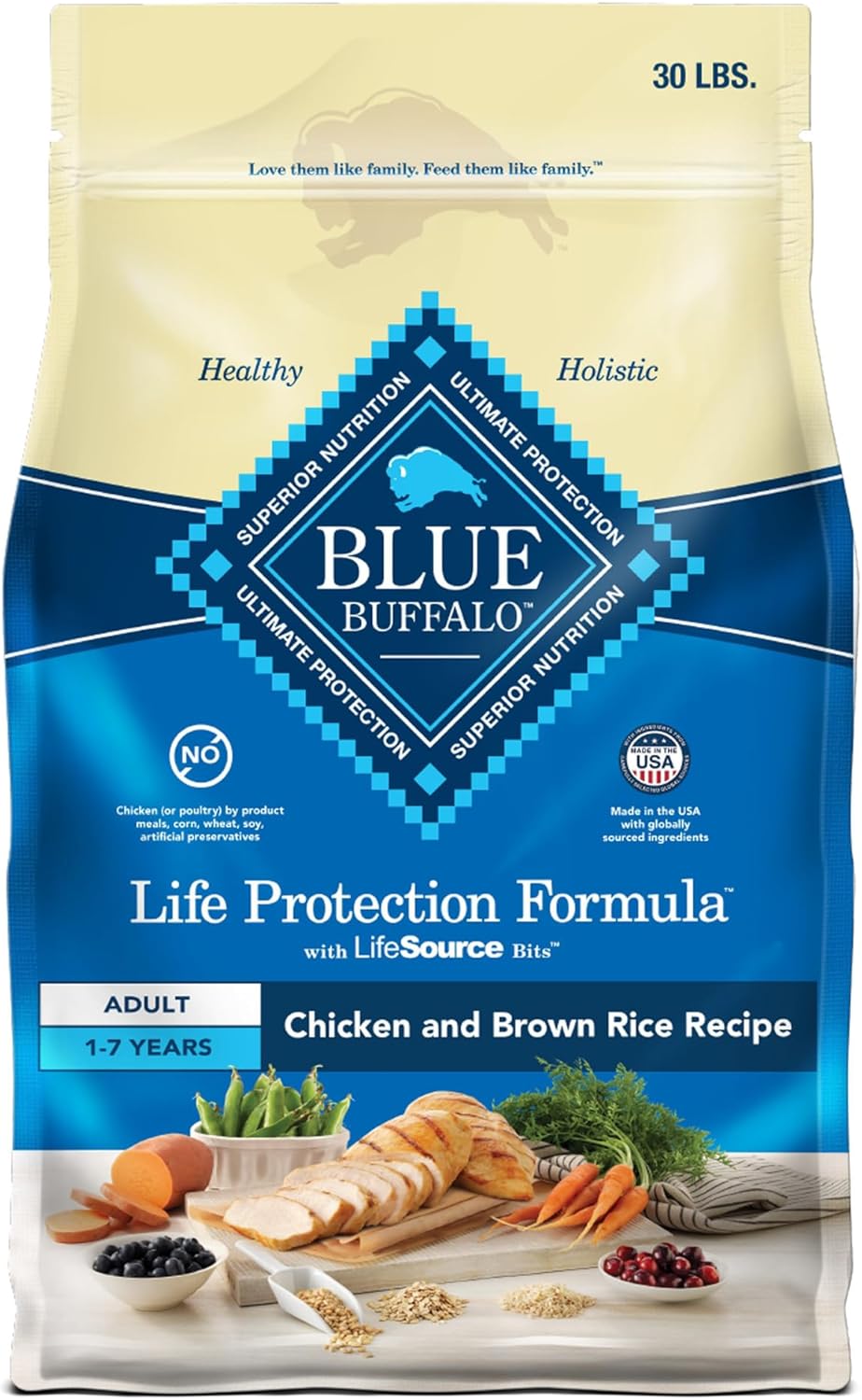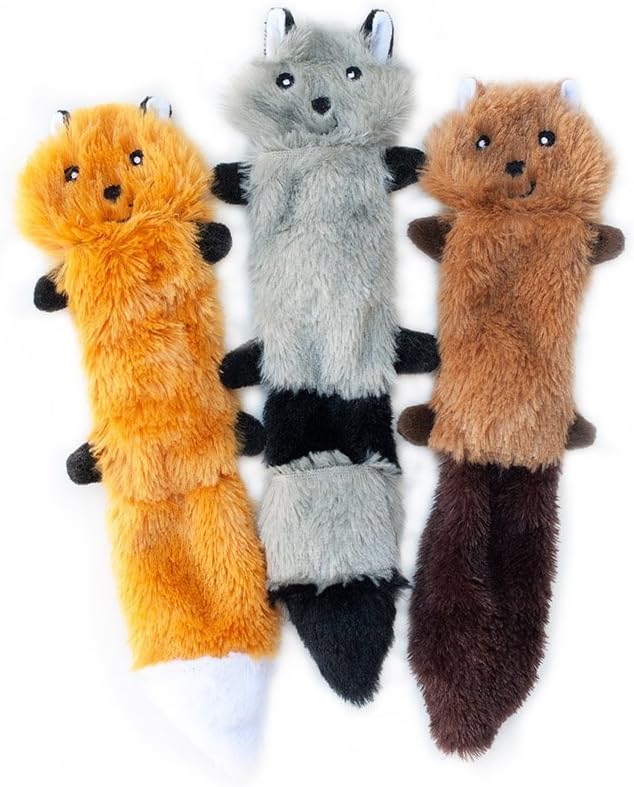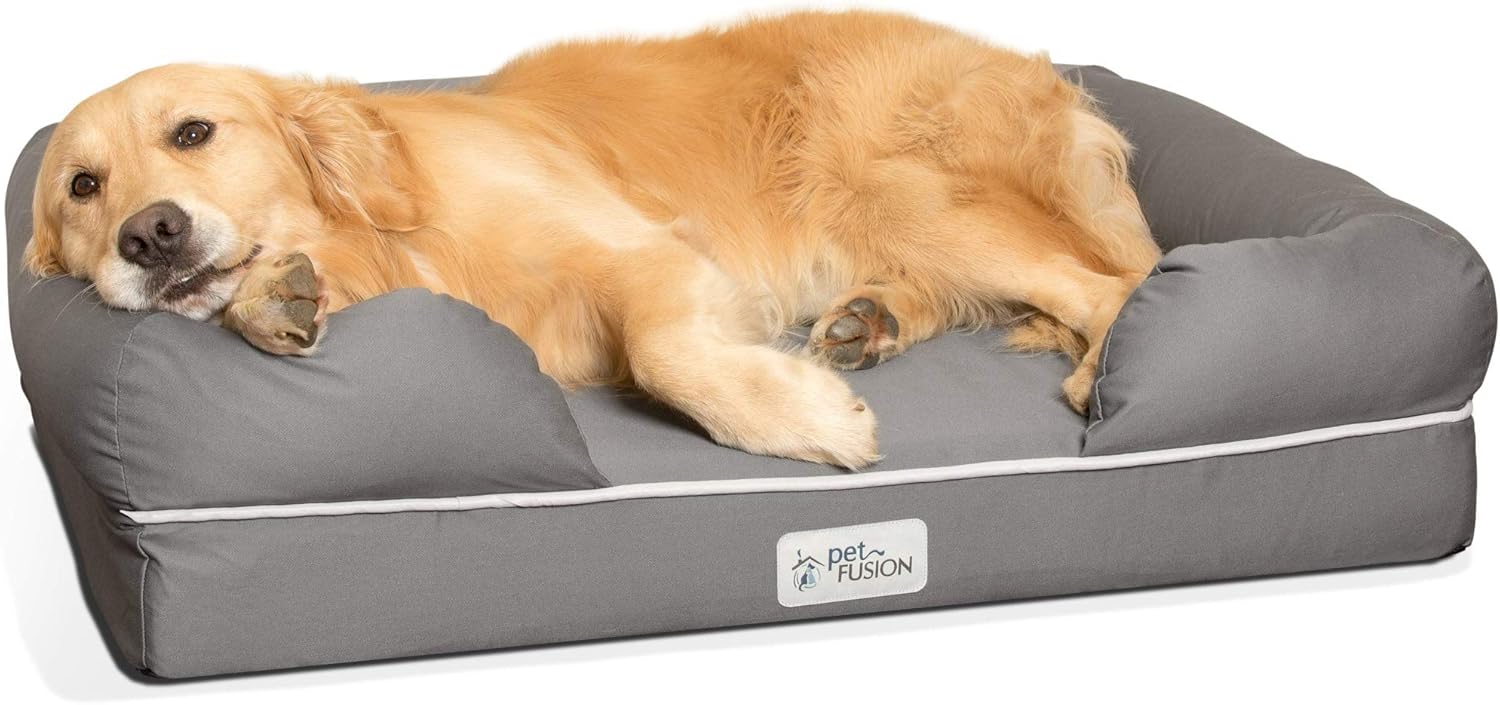 |
Key Points:
|
| Selecting the perfect dog breed for your family means considering your living space, how active you are, and what kind of personality, grooming needs, and health considerations fit your lifestyle. Taking the time to evaluate your daily routines and prepare your home will help create a happy, rewarding relationship with your new furry friend. Adoption from shelters or rescues is a rewarding option that adds joy while offering a pet a loving home.
In this article, we explore key factors to guide you in selecting the perfect dog for your family, ensuring a happy and well-matched addition to your household. |
|
Assess Your Living Situation
The size of your living space is a key factor in determining the most suitable dog breed.
- Apartments or Small Homes: Smaller breeds like French Bulldogs, Pugs, or Dachshunds are ideal for limited spaces. These dogs typically require less room to roam and are often content with short walks and indoor play.
- Houses with Yards: Larger breeds, such as Golden Retrievers, Labradors, and German Shepherds, may be more suitable if you have a spacious yard. These dogs enjoy having ample space to run and play.
Quick Tips for Assessing Your Living Situation
1. Consider Space Availability:
- Small Apartments or Homes: Opt for smaller breeds like French Bulldogs, Pugs, or Dachshunds.
- Large Homes with Yards: Larger breeds like Golden Retrievers, Labradors, and German Shepherds thrive here.
2. Check Local Regulations:
- Review pet policies in your building or neighborhood for breed and size restrictions.
3. Evaluate Noise Tolerance:
- If you live in a quiet environment, choose a breed known for being less vocal, like Basenjis or Cavalier King Charles Spaniels.
4. Assess Your Outdoor Access:
- Ensure you have nearby parks or walking areas if you choose a breed that needs regular exercise.
5. Plan for Indoor Activities:
- For smaller living spaces, select breeds that are content with indoor play and short walks, such as Chihuahuas or Shih Tzus.
6. Factor in Climate:
- Consider the climate of your area; breeds with thick coats, like Huskies, may not be suitable for hot climates.
7. Check for Stairs and Elevators:
- If you live in a multi-story building without an elevator, avoid breeds that have difficulty with stairs, like older dogs or those with joint issues.
8. Plan for Pet-proofing:
- Ensure you can pet-proof your living area, especially if you choose a curious or energetic breed.
9. Think About Yard Size:
- If you have a yard, ensure it is securely fenced, especially for breeds that like to roam, such as Beagles or Border Collies.
10. Consider Future Changes:
- Consider any potential changes in your living situation and how they might affect your pet.
Consider Your Family’s Activity Level
Your family’s activity level is another important factor in choosing a dog breed.
- Active Families: If your family enjoys outdoor activities such as hiking or running, consider breeds like Border Collies, Australian Shepherds, or Siberian Huskies. These canines have high energy levels and will thrive with an active lifestyle.
- Less Active Families: If your family prefers a more relaxed lifestyle, breeds such as Bulldogs, Basset Hounds, or Shih Tzus may be a better match. These dogs are typically more laid-back and require less exercise.
Quick Tips for Considering Your Family’s Activity Level
Do’s
-
Match Activity Levels:
Choose a breed that matches your family’s energy. Active families might prefer breeds like Border Collies, Australian Shepherds, or Labrador Retrievers.
-
Plan Regular Exercise:
Ensure you have time for daily walks, playtime, and mental stimulation for high-energy breeds.
-
Involve the Whole Family:
Make sure everyone is committed to participating in the dog’s exercise routine, especially if you choose an active breed.
-
Research Breed Energy Needs:
Learn about the specific exercise requirements of the breed you’re considering to avoid under-exercising or over-exercising.
-
Consider Training:
Invest in training classes or activities, such as agility training, for breeds that need mental stimulation as well as physical exercise.
Don’ts
-
Ignore Your Own Activity Level:
Don’t adopt a high-energy breed if your family prefers a sedentary lifestyle; this can lead to behavioral issues.
-
Underestimate the Commitment:
Don’t assume a quick walk is sufficient for breeds that require vigorous exercise and engagement.
-
Forget About Indoor Play:
Don’t overlook the need for indoor activities and toys, especially in bad weather or if you have limited outdoor space.
-
Disregard Space Needs:
Don’t choose a large, active breed if you live in a small apartment with no nearby parks.
-
Neglect Regular Routines:
Remember that consistent routines help maintain a dog’s physical and mental health, regardless of its energy level.
Evaluate the Dog’s Temperament
Each dog breed has unique temperament traits that may or may not suit your family dynamic.
- Friendly and Sociable: Breeds like Golden Retrievers, Labradors, and Beagles are known for their friendly and sociable nature, making them great with children and other pets.
- Protective and Loyal: If you are looking for a dog that can provide a sense of security, breeds like German Shepherds, Doberman Pinschers, and Rottweilers are well-known for their steadfast loyalty and strong protective instincts.
Evaluating Dog Temperaments
| Breed | Temperament | Friendliness | Trainability | Compatibility with Children |
| Golden Retriever | Friendly, Intelligent, Devoted | Very High | Very High | Excellent |
| Labrador Retriever | Outgoing, Even-tempered, Gentle | Very High | Very High | Excellent |
| Beagle | Curious, Merry, Friendly | High | Moderate | Excellent |
| Bulldog | Docile, Willful, Friendly | High | Low | Excellent |
| Poodle | Intelligent, Alert, Active | High | Very High | Excellent |
| German Shepherd | Confident, Courageous, Smart | Moderate | Very High | Good |
| Dachshund | Curious, Spunky, Brave | High | Moderate | Good |
| Shih Tzu | Affectionate, Playful, Outgoing | High | Moderate | Excellent |
| Boxer | Fun-loving, Bright, Active | High | High | Excellent |
| Border Collie | Intelligent, Energetic, Alert | High | Very High | Good |
| Bichon Frise | Playful, Curious, Peppy | High | High | Excellent |
| Siberian Husky | Friendly, Outgoing, Mischievous | High | Moderate | Good |
| Cavalier King Charles Spaniel | Affectionate, Gentle, Graceful | High | High | Excellent |
| Australian Shepherd | Intelligent, Energetic, Good-natured | High | Very High | Good |
| Yorkshire Terrier | Spirited, Affectionate, Sprightly | High | High | Good |
| Rottweiler | Confident, Fearless, Good-natured | Moderate | High | Good |
| Cocker Spaniel | Gentle, Smart, Happy | High | High | Excellent |
| Pug | Charming, Mischievous, Loving | High | Moderate | Excellent |
| Maltese | Gentle, Playful, Charming | High | High | Excellent |
Allergy Considerations
If anyone in your family has allergies, selecting a hypoallergenic breed can be crucial.
Hypoallergenic Breeds: Breeds such as Poodles, Bichon Frises, and Portuguese Water Dogs produce fewer allergens, making them more suitable for families with allergies.
Grooming Requirements
Grooming needs vary significantly between breeds and can impact your decision.
Quick Tips for Grooming Requirements
1. Understand the Grooming Needs:
- Low-Maintenance Breeds: Choose breeds like Beagles, Boxers, or Whippets if you prefer minimal grooming. These dogs have short coats that require occasional brushing and infrequent baths.
- High-Maintenance Breeds: If you don’t mind regular grooming, opt for breeds like Poodles, Shih Tzus, or Afghan Hounds. These dogs have long or curly coats that need frequent brushing, grooming, and sometimes professional care.
2. Invest in Quality Grooming Tools:
- Purchase the appropriate brushes, combs, and nail clippers for your dog’s coat type. Having the appropriate tools can make grooming simpler and more effective.
3. Establish a Grooming Routine:
- Create a consistent grooming schedule to keep your dog’s coat healthy and clean. Regular grooming sessions help reduce shedding, prevent matting, and comfort your dog.
4. Check for Allergies:
- Be mindful of any skin sensitivities or allergies your canine may have. If necessary, use hypoallergenic shampoos and grooming products to avoid irritation.
5. Regular Ear and Dental Care:
- Include ear cleaning and dental care in your grooming routine. Regularly inspect and clean your furry friend’s ears to prevent infections, and brush their teeth to ensure good oral health.
6. Monitor for Skin Issues:
- While grooming, look for signs of skin problems such as redness, bumps, or parasites. Detecting issues early can prevent more serious health problems.
7. Seek Professional Help When Needed:
- Consider regular visits to a professional groomer for breeds with complex grooming needs. They can provide services like haircuts, nail trimming, and thorough cleaning.
8. Make Grooming a Positive Experience:
- Use treats, praise, and patience to make grooming a pleasant experience for your dog. This will help keep them calm and cooperative during grooming sessions.
Lifespan and Health Issues
Consider the lifespan and common health issues associated with the breed.
- Longer Lifespans: Smaller breeds like Chihuahuas, Dachshunds, and Toy Poodles often live longer, sometimes up to 15-20 years.
- Health Considerations: Research common health issues for the breed you are considering to ensure you are prepared for potential veterinary care needs.
Quick Tips: Lifespan and Health Issues
Understanding Lifespan
1. Research Breed Lifespan:
- Different breeds have different average lifespans. Small breeds like Chihuahuas and Dachshunds often live 12-20 years, while larger breeds like Great Danes and Mastiffs typically live 7-10 years.
2. Consider Longevity:
- Think about your long-term commitment. Adopting a breed with a longer lifespan means you’ll have a companion for many years, but it also requires planning for their care as they age.
3. Monitor Health Changes:
- As dogs age, they might need more frequent vet visits and specialized care. Be prepared for the increased attention older dogs may need.
Common Health Issues
1. Genetic Predispositions:
- Research common health issues for the breed you’re considering. For example, Bulldogs and Pugs often have respiratory issues, while German Shepherds and Labradors can have hip dysplasia.
2. Routine Vet Care:
- Ensure regular veterinary check-ups to catch any health issues early. Preventative care can significantly enhance your dog’s quality of life and longevity.
3. Healthy Diet and Exercise:
- To help prevent obesity and related health problems, maintain a balanced diet and consistent exercise routine suited to your dog’s breed and age.
4. Dental Health:
- Dental issues are common in many breeds, particularly small dogs. Routine teeth cleaning and dental check-ups are essential.
5. Vaccinations and Parasite Control:
- Keep your dog up-to-date with vaccinations and regular treatments for parasites like fleas, ticks, and worms.
Special Considerations
-
Adopt a Senior Dog:
Senior dogs can be a wonderful addition to your family. They often have calmer temperaments and are usually house-trained. However, be prepared for possible age-related health issues.
-
Health Insurance:
Consider pet health insurance to help manage the costs of veterinary care, especially for breeds prone to specific health problems.
-
Lifestyle Adjustments:
Be ready to adjust your lifestyle to meet your dog’s health needs, especially as it ages. This might include modifications to your home, changes in its diet, or more frequent vet visits.
Quick Summary
- Lifespan: Small breeds typically live longer than large breeds. Plan for the long-term care of your dog.
- Common Health Issues: Understand the health issues common to your chosen breed and be proactive with veterinary care.
- Preventative Care: Regular vet visits, a healthy diet, exercise, and dental care are essential for your dog’s health.
- Special Considerations: Senior dogs need special care; consider health insurance and be prepared for lifestyle adjustments.
Adopting from Shelters or Rescues
Don’t overlook the option of adopting a dog from a shelter or rescue organization. Mixed breeds can often be healthier and have unique, lovable personalities. Additionally, adopting a needy dog can be a rewarding experience for your family.
Do’s and Don’ts for Adopting from Shelters or Rescues
| Do’s | Don’ts |
| Research | Rush the Decision |
| – Research different breeds to understand their needs. | – Don’t rush into adopting without thorough consideration. |
| – Learn about the shelter or rescue organization. | – Avoid making an impulsive decision based on appearance alone. |
| Visit Multiple Times | Skip the Vet Check |
| – Visit the shelter multiple times to interact with the dog. | – Don’t skip the initial veterinary check-up and necessary vaccinations. |
| – Spend time with the dog in different settings. | – Avoid ignoring the dog’s health history and any potential issues. |
| Ask Questions | Ignore Compatibility |
| – Ask about the dog’s background, behavior, and health. | – Don’t ignore whether the dog’s temperament fits your family’s lifestyle. |
| – Inquire about any special needs or training the dog may require. | – Avoid adopting a dog without considering the needs of other pets. |
| Prepare Your Home | Overlook Long-Term Commitment |
| – Dog-proof your home and prepare a comfortable space for the dog. | – Don’t overlook the long-term commitment and responsibilities of pet ownership. |
| – Have all necessary supplies ready before bringing the dog home. | – Avoid adopting if you’re not ready for a 10-15 year commitment. |
| Consider Adult Dogs | Overlook the Adjustment Period |
| – Consider adopting adult or senior dogs, as they are often overlooked. | – Don’t expect the dog to adjust immediately; give it time to settle. |
| – Adult dogs might already be trained and socialized. | – Avoid being impatient during the adjustment period. |
| Introduce Gradually | Neglect Training and Socialization |
| – Gradually introduce the new dog to your home and family members. | – Don’t neglect the importance of training and socializing the dog. |
| – Monitor initial interactions with other pets closely. | – Avoid assuming the dog will automatically know how to behave in its new environment. |
| Follow Up | Ignore Shelter Support |
| – Follow up with the shelter or rescue for support and advice. | – Don’t ignore the resources and support the shelter can provide. |
| – Keep the organization updated on the dog’s progress. | – Avoid hesitating to reach out for help if you face challenges. |
Top 10 Must-Have Products for Choosing and Caring for the Perfect Dog Breed
Conclusion
Adopting a dog is a joyful and fulfilling experience, bringing a new level of companionship and love into your family’s life. Whether you’re adopting a lively puppy or a calm senior dog, understanding their needs and characteristics is crucial to ensuring a harmonious and happy relationship.
Bringing a dog into your home is a decision that will enrich your life with joy, laughter, and unconditional love. By selecting the appropriate breed, understanding their needs, and committing to their care, you’ll create a nurturing environment where your dog can thrive. Embrace the journey with an open heart, and you’ll find that the bond you share with your dog will be one of the most rewarding experiences of your life.
Remember, a happy dog makes a happy family. Enjoy every moment with your new furry friend, and cherish the incredible memories you’ll create together.











